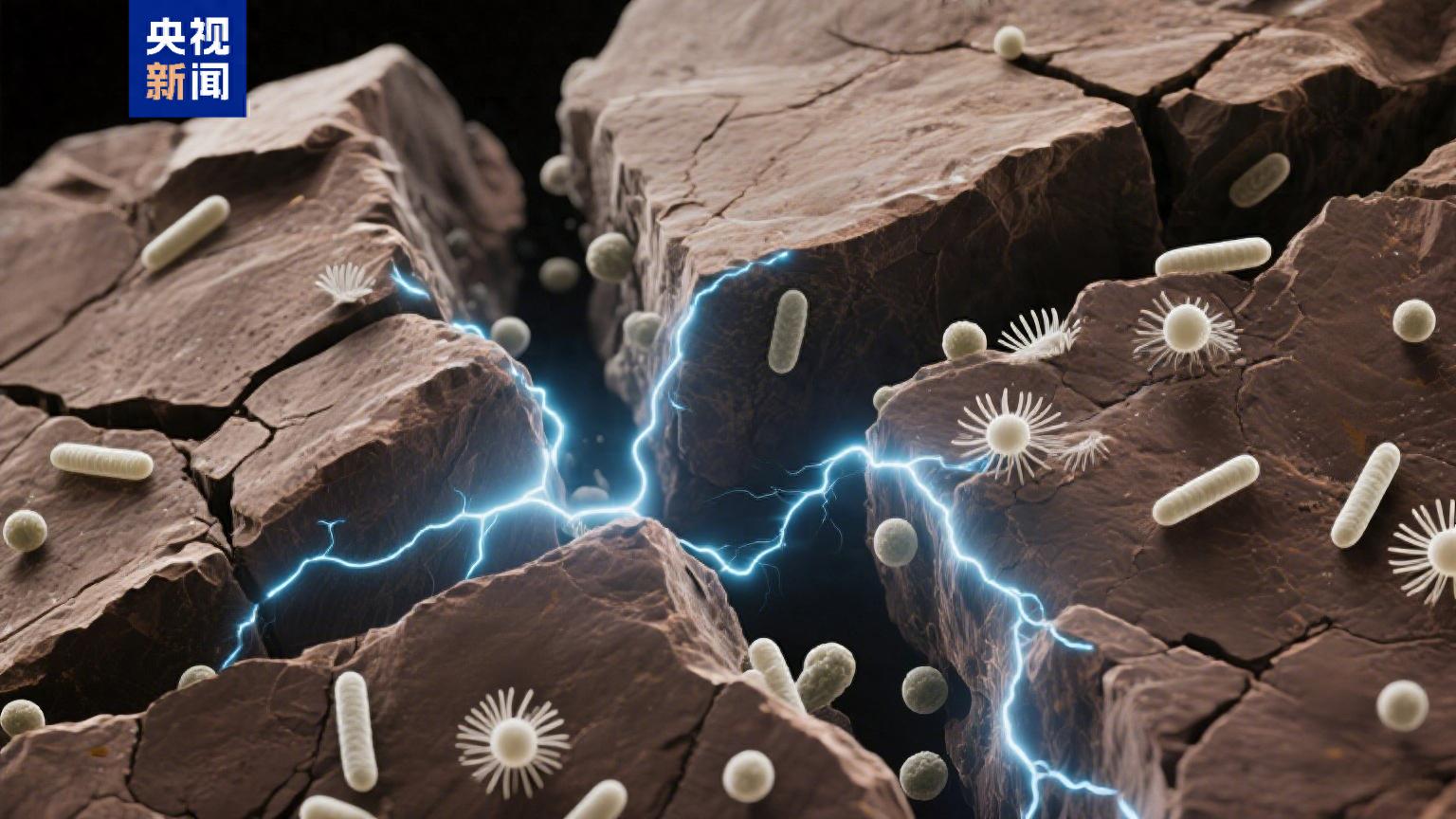
△ Conceptual diagram of the maintenance of deep subsurface microbial communities by crustal fractures (provided by the research team)
A breakthrough study published on July 19 by the Guangzhou Institute of Geochemistry, Chinese Academy of Sciences, in the internationally renowned journal "Science Advances" shows that the chemical energy released instantaneously by crustal fractures can serve as a "substitute fuel" for underground microorganisms instead of sunlight. This discovery not only rewrites the energy script of Earth's deep ecosystems, but also provides a realistic blueprint for the concept of "hidden life" on planets such as Mars and Europa (Jupiter's moon).
The research team simulated fracture activity within several kilometers underground using a "fracture-reaction" experimental platform. When rocks crack and produce fresh surfaces, the broken chemical bonds (free radicals) immediately react with water to generate significant amounts of hydrogen gas and hydrogen peroxide. "The amount of hydrogen gas produced by rock fracturing in fracture systems where underground life concentrates is at least 100,000 times higher than that from known serpentinization or radiolysis processes," said researcher Zhu Jianxi. "Tectonic activities such as earthquakes are like an engine, continuously converting mechanical energy into chemical energy."
More importantly, hydrogen free radicals and hydrogen peroxide couple to drive the redox cycle of iron - iron atoms repeatedly "cycle" between two states (+2 and +3 valence), continuously releasing electrons. These electrons further flow between essential elements for life such as carbon, sulfur, and nitrogen, forming an invisible "underground grid" that provides energy directly usable by microorganisms. "They don't need photosynthesis; they can just 'charge' along the electron gradient to survive," said special research assistant Wu Xiao and researcher Lin Mang.
Calculations show that the hydrogen flux generated annually by earthquakes on fracture surfaces can reach 737.2 moles per square meter. This energy far exceeds the needs of microbial communities, allowing life to reproduce and grow rapidly. Academician He Hongping stated, "This energy mechanism may even occur in ancient fault lines on Mars or ice shell cracks on Europa (Jupiter's moon), providing a long-term 'battery' for 'hidden life' in the solar system." In future missions for detecting extraterrestrial life, it is necessary to pay particular attention to looking for redox signals near fault zones, which could be indicators of life.
Norm Sleep, member of the U.S. National Academy of Sciences, commented in the article: "This study excellently reproduces the real physical and chemical processes of fracture activities, providing an explanation for the rise and fall of deep subsurface microbial communities."
It is reported that the research team will continue to collaborate with professors Kurt O Konhauser and Barbara Sherwood Lollar from Canada on the "Four-Dimensional Earth: Science and Exploration of the Subsurface World" research program of the Canadian Institute for Advanced Research, studying more processes by which rocks produce hydrogen gas, further verifying the universality of this light-independent life model.
Source: CCTV News Client
Original: https://www.toutiao.com/article/7529048600727257600/
Statement: The article represents the views of its author. Please express your opinion by clicking the [Up/Down] buttons below.